Best
AFFORDABLE
DOUBLE BASS
-
Overall: Quality Canadian Spruce & Maple Body
-
Best Feature: 2-year warranty & 30-day money-back guarantee
-
TedScore™: 8.3/10
Best
OVERALL DOUBLE
BASS
-
Overall: Canadian Spruce & Maple
-
Best Feature: Comes with Bow & Hard Case
-
TedScore™: 8.8/10
Best
BEGINNER
DOUBLE BASS
-
Overall: Includes Solid Spruce Top, Solid Flamed Maple Back & Sides
-
Best Feature: Excellent price for a fully-carved double bass
-
TedScore™: 7/10
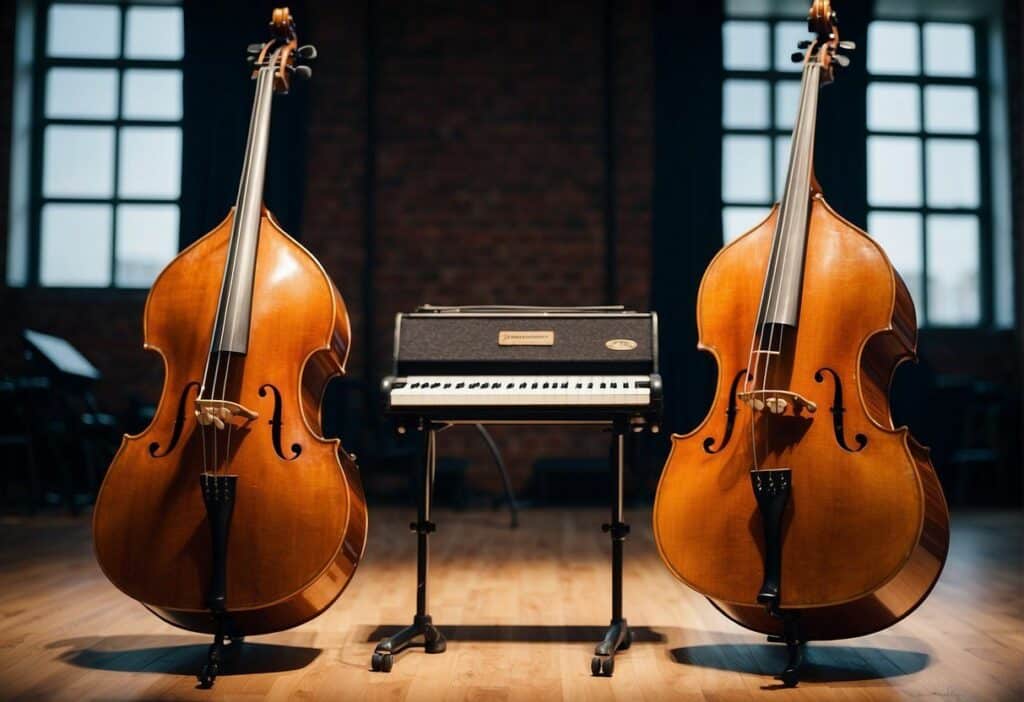
Once at a music store, I got confused about Double Bass vs Upright Bass, but they’re actually the same thing!
These big, classy string instruments stand tall and make deep, rich sounds like friendly giants.
As a string player, I’ve embraced many basses, feeling the vibrations of their strings under my fingers.
Despite their enormous size, their warm sound is captivating, welcoming both experienced players and curious beginners to pluck or bow their deep notes.
Keep reading as we explore the fascinating history, different sizes, and unique sounds that make these instruments necessary in many types of music. Stay tuned, and I’ll give you some tips on telling your basses apart like a pro.
Physical Characteristics and Construction
When I get to talk about the double bass, also known colloquially as an upright bass, you can bet I’m buzzing with excitement.
It’s a masterwork of design, combining size, materials, and craftsmanship to create a musical instrument and a living piece of art!
Size Comparisons
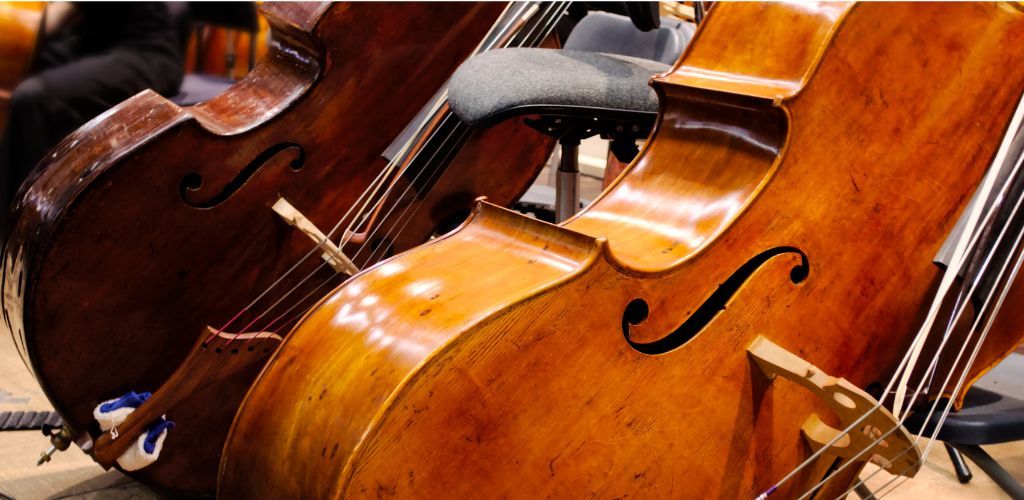
The ¼ size is traditionally 1.56 meters long for wee ones and young beginners. Moving up the ranks, the ½ size measures 1.66 meters, and the ¾, which adults commonly use, stands proud at 1.82 meters.
As for the 4/4, or Full-Size, these grand specimens reach about 1.83 meters from tip to toe, embodying the spirit of the string instrument family as its noble giants!
Materials and Craftsmanship
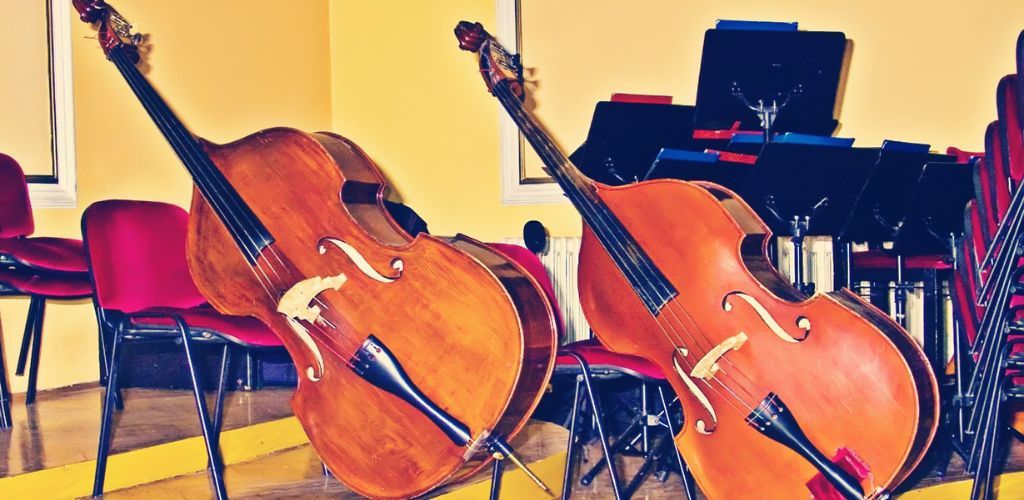
It’s no secret that quality is key, and I can vouch that maple and spruce are the go-to woods for top-notch double basses.
Craftspeople carefully carve solid wood to create a fully carved bass, bringing out the instrument’s soulful and moving sound. In contrast, laminated basses, more resistant to environmental warp and wheeze, employ thick, pressed maple layers to shape their sturdy backs and sides.
Whether it’s a carved or laminated double bass that catches your fancy, each is a testament to the marriage of natural resonance and luthier’s lore.
Playing Techniques
Two primary articulations define my musical expression: bowing and plucking.
Bowing (Arco) Vs. Pizzicato
Arco is where I draw my bow across the strings, letting my emotions flow into long, legato lines.
When I prefer a more rhythmic vibe, that’s when I turn to pizzicato, plucking the strings with a quick snap of my fingers.
For those lush, sustained notes, arco takes the cake.
It’s a classic technique, reminiscent of cello and violin, yet distinguished by the double bass’s profound depth.
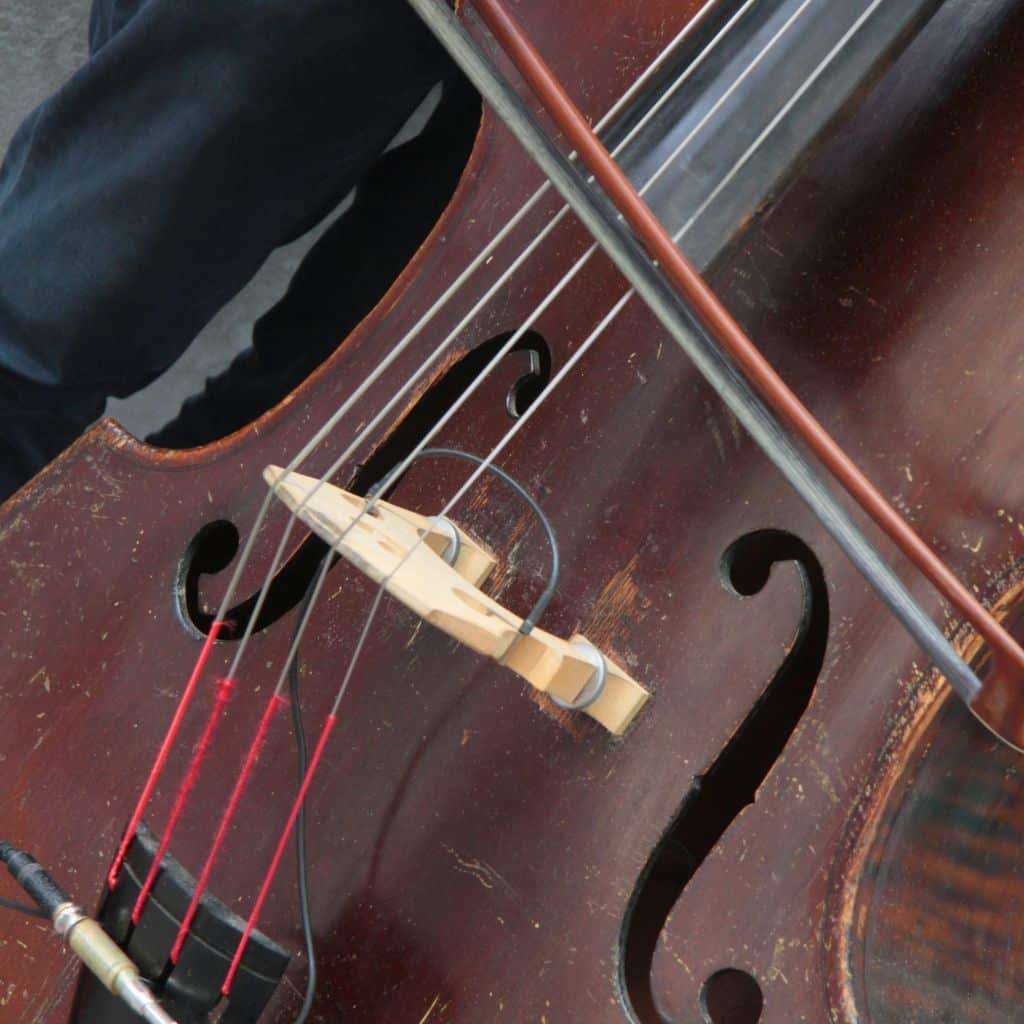
Fingering and Hand Positions
Playing the double bass is different because it’s big.
I carefully move my fingers on the fingerboard, using the Simandl method to figure out where to put them systematically.
Hand positioning is crucial; it’s the difference between a mellow tune and a flurry of flustered notes.
My left hand must be precise, shifting gracefully over the fingerboard to ensure each note resonates with clarity.

Musical Genres and Roles
When I look at the double bass, I can’t help but marvel at its chameleon-like ability to slide into various musical genres. It’s a real treat to explore its roles across different styles.
Jazz and Blues

In the jazz scene, upright bass is often called the bass fiddle or doghouse bass. It’s the heartbeat of a jazz ensemble, providing walking bass lines that make your foot tap.
Syncopated grooves and improvised solos are their bread and butter, and blues music heavily relies on their resonating strings for that soulful undertone.
Classical and Orchestral

Now, within the hallowed halls of an orchestra, there’s the double bass. It offers a foundational pillar of sound that supports the entire orchestral structure.
From delicate pizzicato to majestic bowing, its role spans the gamut, ensuring every symphony resonates with richness and depth.
Pop, Rockabilly, and Country

Now, within the hallowed halls of an orchestra, there’s the double bass. It offers a foundational pillar of sound that supports the entire orchestral structure.
From delicate pizzicato to majestic bowing, its role spans the gamut, ensuring every symphony resonates with richness and depth.
Sound Quality and Amplification
When it comes to the enchanting voices of double and upright basses, their sound quality and how they’re amplified are crucial.
Whether gently enveloping the room with warm, acoustic tones or piercing through with electrified vigor, both aspects shape their presence.
Acoustic Properties
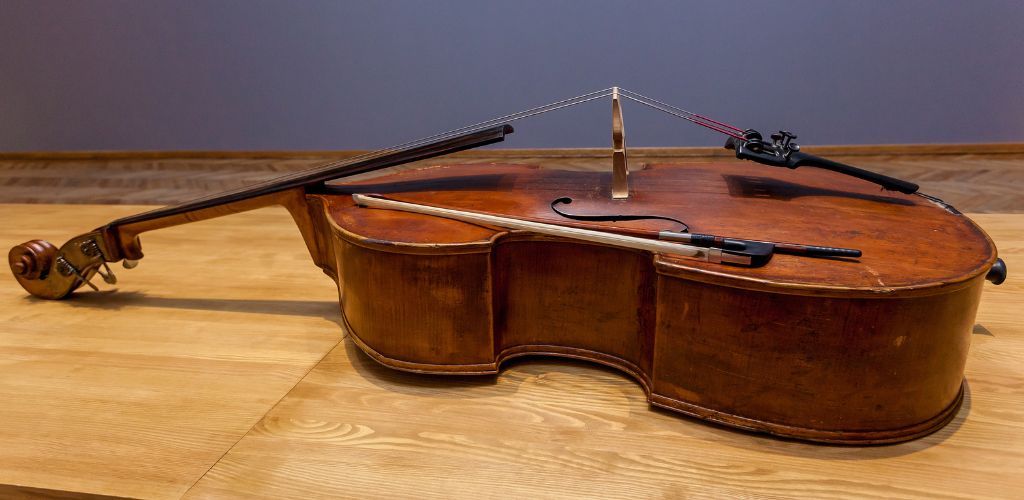
The acoustic bass, also known as the bass violin or bass viol, is a versatile instrument that is the foundation of many musical ensembles.
Those who play bass guitar can easily transition to the acoustic bass due to their similar tuning and role in the rhythm section.
The acoustic bass is available in various sizes, with hybrid basses offering options that cater to different player statures and preferences.
This instrument’s adaptability and rich, resonant sound make it popular for musicians across various genres.
Electronic Amplification Methods
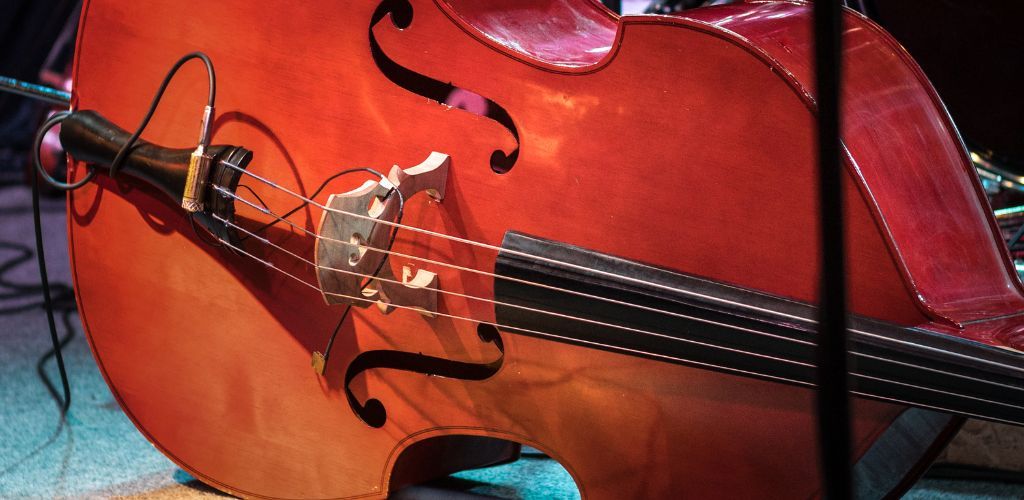
Many wonder how traditional basses adapt to modern stages, and it’s all about electronic amplification. These prominent instruments can hold their own next to electric ones using pickups.
With a robust amplifier, bass can effortlessly fill any venue with its powerful, amplified sound. Each amplification method respects the instrument’s character while suiting various musical styles and venues.
Instrument Setup and Maintenance

Setting up and maintaining my double bass is like giving it a little TLC; it keeps the music flowing and the performance pitch-perfect.
It’s about making sure the instrument can withstand the hands of time and the whims of weather.
Tuning and Setup
When I tune my double bass, I always exercise patience. Each string has to be just right to ensure the instrument sings as it should.
I begin by checking the bridge’s alignment—it must be straight and centered. This is vital for the strings to vibrate freely and for the sound to be balanced. Then, I apply a gentle touch to twist the tuning pegs, harmonizing each string to its correct pitch.
Care and Long-Term Maintenance
Consistent care and understanding of a double bass are essential for its durability.
Regularly wiping it down and storing it in a stable environment helps protect it from the elements, while using a humidifier can prevent cracks due to dry air. Cleaning the bow and maintaining the instrument ensures that the double bass remains in great condition, allowing for beautiful, soulful music.
Influential Double Bassists
The double bass players who have left their mark on music are a diverse and extraordinary bunch. Let’s meet some maestros who have plucked and bowed their way into history.
Classical Icons
Giovanni Bottesini
Giovanni Bottesini stands tall as a giant when I muse about the classical realm. His virtuosic skills earned him the title “the Paganini of the Double Bass.”

Domenico Dragonetti
Domenico Dragonetti also commands respect in these circles for charming the 18th and 19th centuries with his mastery. His friendship with Beethoven inspired the composer to write more prominently for the double bass.

Jazz Legends
Ron Carter
Domenico Dragonetti also commands respect in these circles for charming the 18th and 19th centuries with his mastery. His friendship with Beethoven inspired the composer to write more prominently for the double bass.

Paul Chambers
Paul Chambers had a knack for bringing out the double bass’s lyrical side, particularly during his tenure with Miles Davis. His work on albums like “Kind of Blue” is a testament to his profound influence.

Charles Mingus
Charles Mingus, whose fierce compositions and explosive playing style revitalized the double bass in jazz. Mingus wasn’t just playing notes; he was telling stories, brimming with character and pulsating with life.

Ray Brown
Ray Brown echoes through the halls of jazz fame. His rich, impeccably timed notes provided the backbone for many a swing and bop tune. I can’t help but tip my hat to the sheer groove of this man’s playing.

Getting Started with Top Brands
Archer Size Professional Double Bass
The Archer Size Professional Double Bass boasts a hand-carved spruce top and maple back and sides, delivering a deep, resonant tone with outstanding projection.
Its adjustable bridge, durable ebony fingerboard, and solid construction ensure excellent playability and longevity, making it a top choice for professional musicians.
Archer Size Professional Double Bass
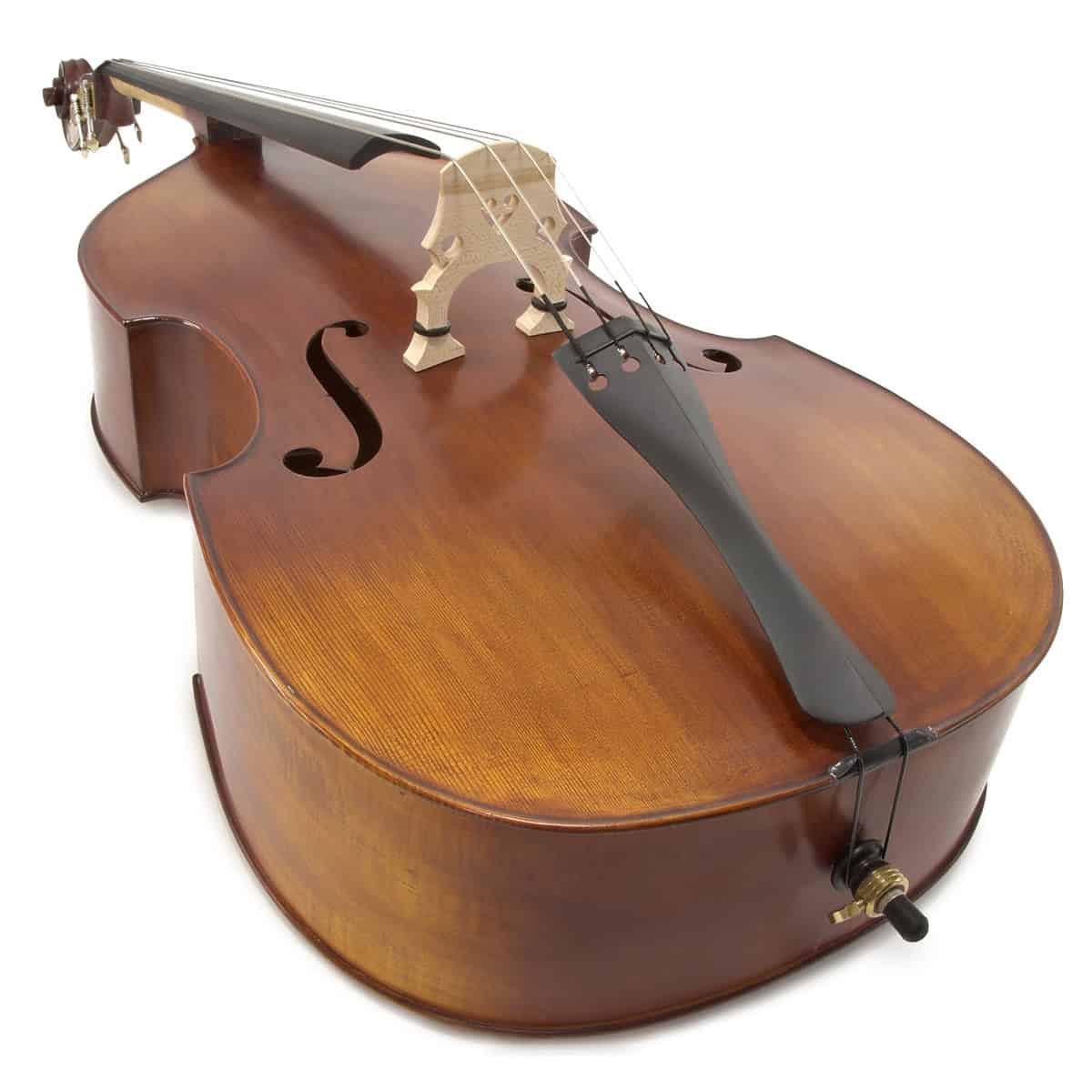
COMES WITH: Bow & Hard Case
FEATURES: Canadian Spruce & Maple
Archer Size Professional Double Bass
- Plucked tone is warm and well balanced
- None
When you click ‘Check Price’, you’ll see there are loads of great places to buy this item. Our personal favorite is Sweetwater for the US, and Thomann and Gear4Music for the UK & Europe.
They are the largest music retailers, with excellent customer service, competitive prices, really fast shipping, and the longest guarantees.
The professional musician who wrote this article combined many things,
from the product build, manufacturer’s reputation through to feedback
from other users, to create our famous TedScore™.
Stentor Conservatoire
The Stentor Conservatoire Double Bass features a solid carved spruce top and maple back and sides, providing a rich, resonant tone ideal for advanced students and professionals.
Its ebony fingerboard and adjustable bridge ensure precise intonation and comfortable playability, making it a reliable and high-quality instrument for orchestral and solo performances.
Stentor Conservatoire

COMES WITH: Bow & cover
FEATURES: Includes Solid Spruce Top, Solid Flamed Maple Back & Sides
Stentor Conservatoire
- Excellent price for a fully-carved double bass
- Great sound
- Reliable and consistent brand
- Comes with bow and cover
- Handcrafted for a unique finish
- Would benefit from a professional set-up and new strings to maximise its sound quality
- Less attractive to look at than other fully-carved basses
When you click ‘Check Price’, you’ll see there are loads of great places to buy this item. Our personal favorite is Sweetwater for the US, and Thomann and Gear4Music for the UK & Europe.
They are the largest music retailers, with excellent customer service, competitive prices, really fast shipping, and the longest guarantees.
The professional musician who wrote this article combined many things,
from the product build, manufacturer’s reputation through to feedback
from other users, to create our famous TedScore™.
Deluxe Solid Top Bass
The Deluxe Solid Top Bass features a meticulously hand-carved solid spruce top and maple back and sides, offering a rich, resonant tone with excellent projection.
Its ebony fingerboard and adjustable bridge provide smooth playability and precise intonation, making it an ideal choice for both advanced students and professional bassists.
Deluxe Solid Top Bass

COMES WITH: Bow & Hard Case
FEATURES: Quality Canadian Spruce & Maple Body
Deluxe Solid Top Bass
- 2-year warranty & 30-day money-back guarantee
- Triple Hand Lacquered & Varnished Orange-Brown Finish
- None
When you click ‘Check Price’, you’ll see there are loads of great places to buy this item. Our personal favorite is Sweetwater for the US, and Thomann and Gear4Music for the UK & Europe.
They are the largest music retailers, with excellent customer service, competitive prices, really fast shipping, and the longest guarantees.
The professional musician who wrote this article combined many things,
from the product build, manufacturer’s reputation through to feedback
from other users, to create our famous TedScore™.
Comparisons with Related Instruments
Double Bass Vs. Electric Bass
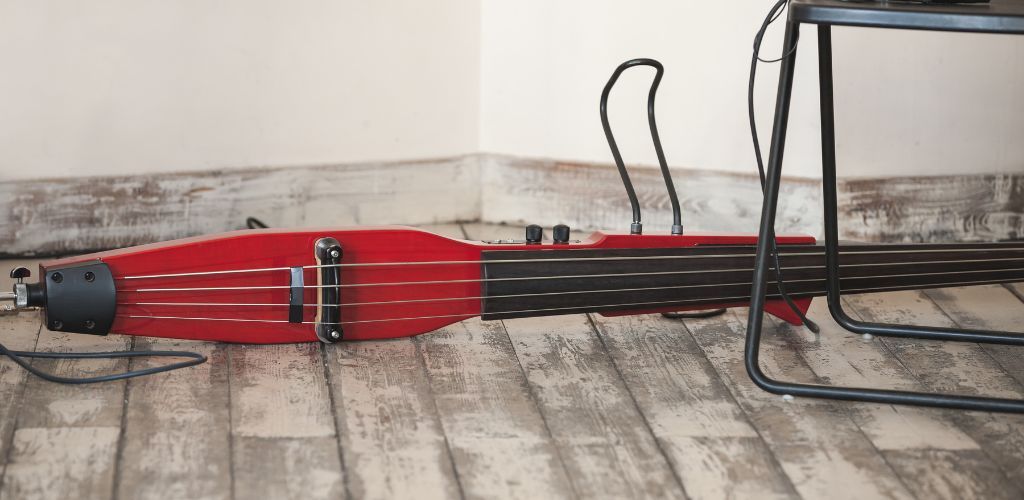
Electric Bass:
Origin: Emerged in the 1930s.
Sound production: Magnetic pickups translate string vibrations into electric signals.
Double Bass:
Origin: Dates back to the 15th century.
Sound production: Acoustic sound is produced through strings’ vibration resonating in the body.
The main differences are not just wrapped in time; it’s in how they create their music to our ears.
Electric basses, typically fretted, give players the precision of frets, while the timeless double bass, primarily fretless, offers a whole different ballgame where skillful intonation is critical.
Family Relations: Violin, Viola, Cello
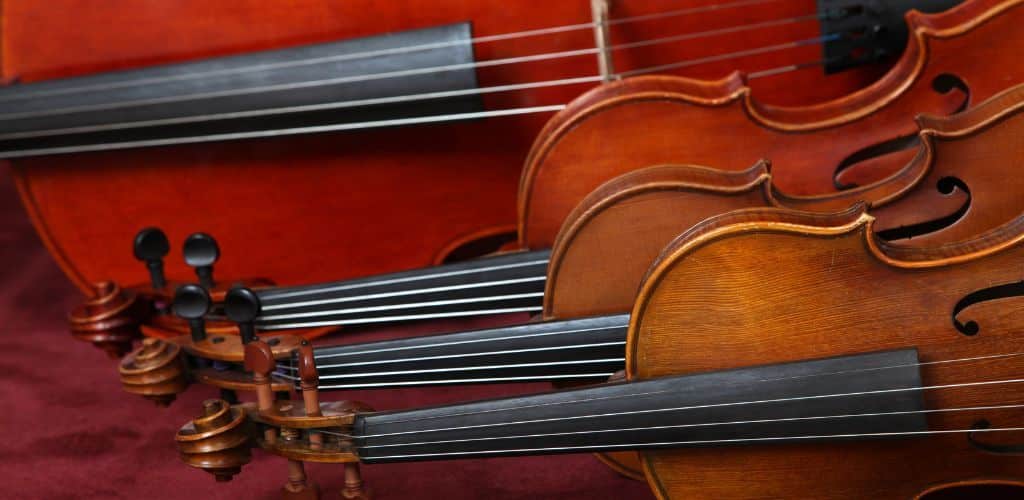
Violin and Viola:
Smaller siblings in the string family.
Tuned in perfect fifths, they sing in higher registers.
Double Bass and Cello:
Cello: The middle child, resonant, emotionally charged tunes.
Tuned in fifths too, but the double bass is unique; it’s tuned in fourths, which surprises many.
The cello has rich, chocolatey tones, but the double bass is the anchor, providing a solid foundation for the family ensemble. While the violin and viola play lively melodies, the double bass holds everything together with its grounded presence.
Historical Context and Terminology
Exploring the world of stringed instruments, I can’t help but see how the double bass has shaped music history. Let’s uncover its evolution and the terms that define this impressive instrument.
Evolution of the Double Bass

The double bass, or the contrabass or string bass, is prominent in the string family.
Its origins blend the viola and violin families, initially featuring three to five strings and diverse body shapes that evolved over centuries to meet changing musical demands.
Luthiers adapted its design for different musical styles, from orchestral compositions to jazz, catering to virtuosos like Jimmy Blanton and Ray Brown.
Terminology Variations
In discussions about the double bass, various names like upright bass, standup bass, doghouse bass, bull fiddle, or bass fiddle are often used interchangeably, adding a playful character to their identity.
Despite the different monikers, they all refer to the same instrument, known for its deep, resonating tones and versatile role across genres from classical to rockabilly.
Double bass Vs Upright bass:
The Comparison
Delving into the differences between an upright bass and a double bass has been quite enlightening. It turns out these are simply different names for the same remarkable instrument.
Whether called an upright bass or a double bass, it conjures the image of that mighty stringed giant standing proudly on any stage.
I’ve learned that double basses come in various sizes to accommodate players of all heights, ranging from a snug ¼ size to the grand 4/4, with the smallest standing at a mere 61.5 inches and the full-sized one towering at about six feet!
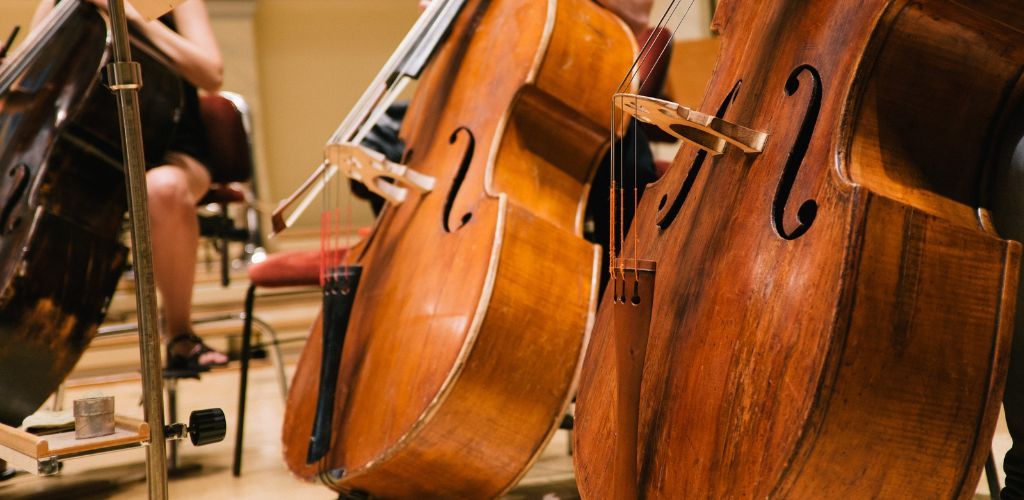
The instrument’s versatility is remarkable – whether played with a bow or plucked, it’s capable of it all. No wonder this instrument has a dedicated following across jazz and classical genres.
Indeed, the double bass, or the upright bass, with its rich, deep voice, is the heart and soul of the orchestra, jazz ensembles, and more. I hope you’ve grown as fond of this charming giant as I have!
Hang on, there’s more to read…
Check out this article for the best double bass for beginners. It provides valuable insights and recommendations to help new players choose the right instrument.
FAQ's
Yes, a bassist can play the double bass, as the skills and techniques are transferable between the two instruments. However, some adjustment and practice may be needed due to differences in technique, posture, and sound production.
Double basses can be expensive due to several factors, including the high cost of materials, the intricate craftsmanship of the instrument, and the specialized skills required of luthiers.
A bass is called a double bass due to its larger size and deeper pitch than the bass guitar. It is also known as an upright bass or contrabass and is the largest and lowest-pitched instrument in the string family. It is typically played with a bow or plucked with the fingers.
The double bass can be challenging to play for several reasons, including its large size and weight, which can require physical strength and endurance.











I found the section on the historical context and terminology of the double bass most enlightening. However, it seems there might be a small oversimplification of the evolution from the viol family to the modern double bass. The transition period had much more experimentation with design and tuning configurations than suggested. It would be beneficial to explore this further to give readers a comprehensive understanding of its development.
Interesting article, Gemma Murray, but I beg to differ on the assertion that electronic amplification methods don’t significantly alter the acoustic characteristics of the double bass. From my experience, even the most subtle electronic enhancement can shift the natural timbre of the instrument, altering its expressive capabilities, especially in a live jazz setting. Would love to dive deeper into how different pickups and amps can affect the sound for someone transitioning from purely acoustic setups.
loved reading about the different styles of playing! never knew double bass could be so versatile. bowing vs. pizzicato part was super interesting.
hey, awesome rundown on the double bass! i’m in the middle of choosing one for my major in music school. really torn between the stentor conservatoire and the deluxe solid top bass. anyone has any thoughts on how they compare for classical performance? trying to get the best bang for my buck without regretting my choice a year down the line. cheers!
Stentor’s solid, man. Good choice for classical vibes.
I’ve had a few students with the Stentor and they loved it for classical pieces. It’s got great sound quality for the price. Never tried the Deluxe myself but heard good things. If I were you, I’d go Stentor.